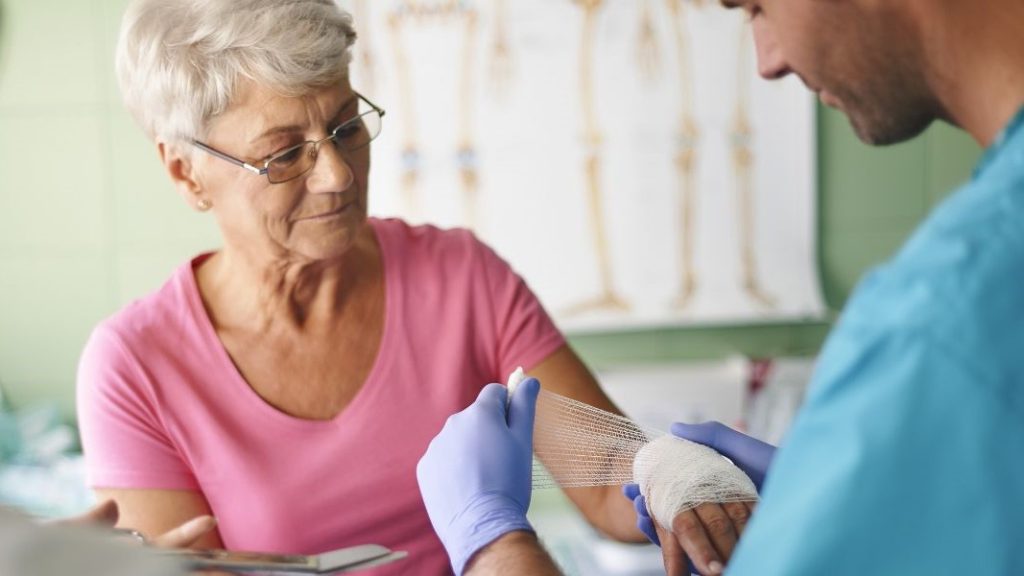FREE Shipping on Orders over $89 with Account – Create One Today!
- (844)-859-9400
- Get Help

If you’re living with diabetes, the development of diabetic wounds can be a frequent concern. If a wound does develop, you’re likely looking for products and treatments that can help speed up healing time.
Fortunately, there are a wide variety of products available that specifically address the unique wound care needs of diabetics. Read on to learn about some of these below.
Because diabetics are more prone to infection, wounds will often develop easily and heal slowly. They will tend to stall at one or more stages of healing due to poor blood circulation and other factors.
Below are some of the best wound care products on the market for people with diabetes:
There is no single best dressing for diabetic wounds. As with much else in wound care, the choice will usually boil down to the type and severity of the wound. However, healthcare professionals generally recommend diabetics use advanced wound dressings, as opposed to standard bandages and gauze. These tend to do a much better job at protecting the area and keeping the wound site hydrated, creating an optimal healing environment.
These come in many forms, including hydrogel, collagen, etc. But the dressings most often associated with diabetic wounds are silicone foam dressings. This is because they generally feature a multi-layer design with one or more layers containing hydrophilic polyurethane foam, which does a remarkable job absorbing wound exudate.
Another main feature is a perforated, adhesive silicone layer which allows exudate to pass through, wicking it away from the wound while maintaining a moist healing environment. This layer also gently adheres to the wound bed, but can be peeled back without doing any damage and re-applied multiple times.
3M’s Tegaderm™ Silicone Foam is a perfect example of these types of dressings. Available in bordered and non-bordered configurations, Tegaderm is highly conformable and features a thin, low-profile edge. There is also a version shaped specifically to fit on the heel, a common location for diabetic wounds.
Other advanced dressings you may want to consider include:
Determining which ointment is best for diabetic wound healing can be tricky because of the many options available. It’s best to choose one with antibacterial properties to help fight infection. These ointments can lower the bacteria on the wound site and help prevent biofilm from forming, effectively promoting faster healing .
Some ingredients to look for in antibiotic ointments:
Cleaning your wounds is a must in the wound-healing process. So if you’re thinking what is the best solution to clean a diabetic wound, saline solution is a top choice. A sterile saline solution is ideal because it effectively removes excess wound secretions and debris.
It also helps remove excess bacteria that can cause infection on the wound site. Purpose-made wound cleansers may do a better job of this in certain situations. The best choice between these two options will depend on your particular wound. If you’re not sure, consult a medical professional.
Regardless of the solution used, t’s essential to clean the wound at least twice a day, but not too vigorously, which may cause further damage.
Vitamin C can support the synthesis of collagen, so it’s critical in all stages of recovery. Increasing your vitamin C intake can boost your body’s natural collagen production, which aids in the healing process.
Vitamin C also has antioxidants that help repair damaged cells, helping wounds heal faster. Plus, it’s known to reduce inflammation and fight infection. Eating foods rich in vitamin C or taking supplements can speed up the wound-healing process.
Vitamin A controls your body’s inflammatory response. It also enhances your immune system, which helps your body fight infection while you’re in the healing process.
Furthermore, vitamin A also accelerates the wound-healing process by stimulating collagen synthesis, which boosts tissue repair. Therefore, it’s essential to increase your vitamin A intake during diabetic wound care.
Managing diabetes is difficult, especially if you suffer from diabetic wounds. Having the right products to support your healing journey is paramount. You can ensure your wound heals faster and healthier using suitable bandages, saline solution, and vitamins, all of which can of course be found at Medical Monks!

Edited for content by ADAM PAGE.
